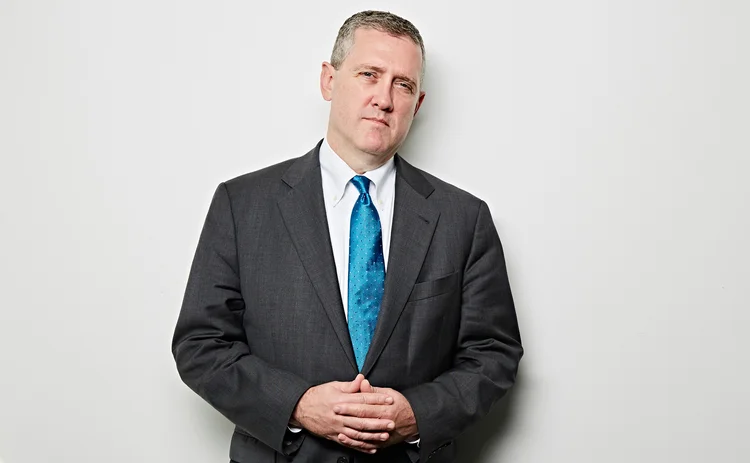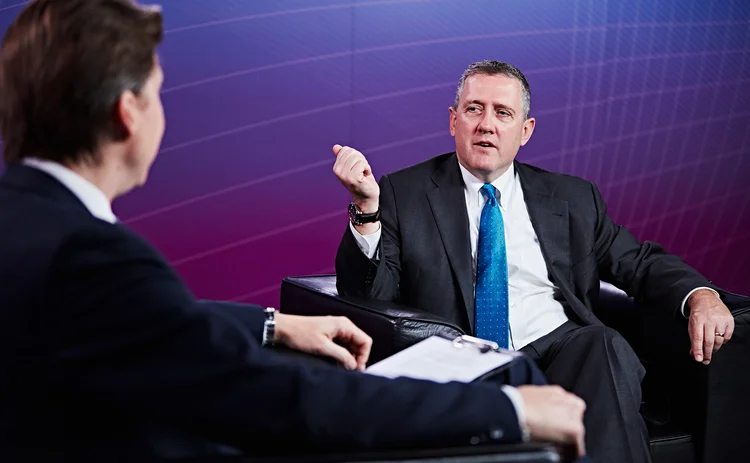
Bullard raises concerns about east coast dominance of the Fed
St Louis Fed president not worried about major shake-up of board

The president of the Federal Reserve Bank of St Louis Fed believes there is an east coast “over-representation” on the US Federal Reserve Board and Federal Open Market Committee (FOMC) that needs to be addressed.
During an interview with Central Banking, James Bullard highlights how the Fed’s devolved structure “saved” it from a more pronounced political backlash in the aftermath of the global financial crisis. Despite this, “east coast” views are still more represented than others from around the US in the Federal Reserve System, he says.
“We could not have survived this crisis without the ‘Main Street’ structure of the Fed,” says Bullard, pointing to the role played by the 12 regional reserve banks. “If it had just been a New York Fed, and there was a bailout and all these things, the New York Fed would have faced a more severe backlash and possibly elimination – or at least very severe reforms. Instead, we have a more politically stable organisation with ‘Main Street’ representation.”
The Fed was the third attempt to create a central bank in the US, and it was only created after the ‘Panic of 1907’. Its founders gave devolved representation to 12 Federal Reserve districts in addition to the Federal Reserve Board in Washington, DC. The presidents of these institutions (with the exception of New York) have rotating voting rights on the FOMC, the committee that sets US monetary policy.New York, which carries out the Fed’s market operations, gets a permanent seat to vote on the FOMC every year; Chicago and Cleveland vote once every other year; and Atlanta, Boston, Dallas, Kansas City, Philadelphia, Richmond, San Francisco and St Louis vote once every three years.When asked if it is fair that the St Louis Fed gets the same voting rights as San Francisco – which represents a much larger economic area in terms of GDP – Bullard says the real injustice is New York’s permanent membership of the FOMC.
“If you want to think about redoing the voting, New York votes at every meeting; California votes once every three meetings. And part of the original issue about setting up the Federal Reserve was that we wanted the representation from around the country, and you did not want to give the east coast over-representation,” says Bullard. “You could think of systems that would rotate, let’s say, every other year, including New York. That would be one way to handle things.”
Board structure an “issue”
Bullard adds that “another issue” is that “the board itself”, which is meant to represent different parts of the country, has representatives that are “only tangentially related to different parts of the country”. “Many of them have been in Washington, DC, or on the east coast for many years, so there’s kind of over-representation of the east coast on many dimensions,” he says.
Part of the original issue about setting up the Federal Reserve was that we wanted the representation from around the country, and you did not want to give the east coast over-representation
James Bullard, St Louis Fed
Following the recent resignation of Daniel Tarullo – believed to be due to political efforts to soften new bank regulations – there are currently just four members of the board, versus seven when it is at full strength. Chair Janet Yellen was born in New York and studied in Connecticut and Rhode Island. Vice-chair Stanley Fischer was born in Northern Rhodesia (now Zambia) and studied in Illinois and Massachusetts. Lael Brainard grew up in Communist Poland and Germany as an expatriate and studied in Connecticut and Massachusetts; while Jerome Powell was born in Washington, DC, and studied in New Jersey and DC.
“New York gets to vote all the time – the governors tend to come mostly from the east coast,” says Bullard. “But if you wanted to spread that out, you could have more militant enforcement of the idea that no two governors can come from the same part of the country.”
Trump’s plans for the Fed
With three board vacancies and Yellen and Fischer’s respective chair and vice-chair roles expiring in 2018, Bullard appears relatively unconcerned about a takeover of the FOMC by Trump administration-appointed officials: “The list of potential nominees that has been circulated – which is Randy Quarles, Marvin Goodfriend and Bob Jones – is a very respectable group.”
Quarles is currently managing director at Cynosure Group, a Utah-based private equity firm, and previously worked at the Treasury Department under president George W Bush. Goodfriend is professor of economics at Carnegie Mellon University, and previously worked as a policy adviser at the Federal Reserve Bank of Richmond. Jones is head of Indiana-based Old National Bancorp, and served as a St Louis Fed board director from 2008–13.
Bullard adds that, while he does not know what the White House is going to do about the chair position, “the fact that they’ve hinted that Janet Yellen could be reappointed, irrespective of whether you think that’s going to happen or not”, does “signal, at least from a monetary policy perspective”, that the administration thinks “monetary policy has been okay”.

“That suggests that whoever they appoint would continue with more or less the same type of policy,” Bullard says. “And so that, again, argues for continuity, and they’re going to do something that is going to keep the general thrust of monetary policy going in the same direction.”
Bullard also points out that the FOMC, with five regional reserve bank members plus up to seven board members, is a big committee. “That means you have people that can provide a lot of continuity and a lot of institutional memory on why certain decisions were made, and what direction future policy can go in,” says Bullard. “So, in that sense, there is natural continuity at the Fed, even when there are some key positions coming open.”
Only users who have a paid subscription or are part of a corporate subscription are able to print or copy content.
To access these options, along with all other subscription benefits, please contact info@centralbanking.com or view our subscription options here: http://subscriptions.centralbanking.com/subscribe
You are currently unable to print this content. Please contact info@centralbanking.com to find out more.
You are currently unable to copy this content. Please contact info@centralbanking.com to find out more.
Copyright Infopro Digital Limited. All rights reserved.
As outlined in our terms and conditions, https://www.infopro-digital.com/terms-and-conditions/subscriptions/ (point 2.4), printing is limited to a single copy.
If you would like to purchase additional rights please email info@centralbanking.com
Copyright Infopro Digital Limited. All rights reserved.
You may share this content using our article tools. As outlined in our terms and conditions, https://www.infopro-digital.com/terms-and-conditions/subscriptions/ (clause 2.4), an Authorised User may only make one copy of the materials for their own personal use. You must also comply with the restrictions in clause 2.5.
If you would like to purchase additional rights please email info@centralbanking.com








